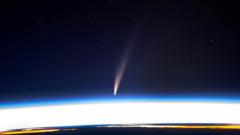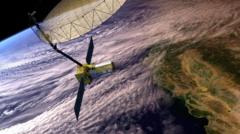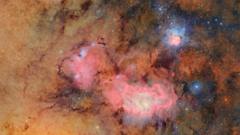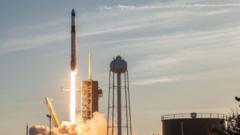A stunning celestial phenomenon is set to captivate skywatchers worldwide, with Comet C/2024 G3 (Atlas) potentially visible for the first and only time in 160,000 years. NASA experts warn that predicting a comet's brightness is inherently tricky, but early assessments suggest this comet could shine brightly enough to be seen without assistance.
Currently, the comet has reached perihelion—the moment it is closest to the Sun—which significantly affects its brightness. Experts predict peak visibility could occur as early as Monday night. While exact locations for optimal viewing remain unclear, it is suggested that the southern hemisphere will offer the best opportunities to sight this brilliant comet, which might shine as luminously as Venus.
Discovered last year by NASA's Asteroid Terrestrial-impact Last Alert System, Dr. Shyam Balaji, a specialist in astroparticle physics and cosmology from King's College London, shares that calculations indicate the comet will pass about 8.3 million miles from our star, categorizing it as a "sun-skirting" comet. This event is described as remarkable, with chances to observe the comet peaking in conjunction with its perihelion pass.
According to Dr. Balaji, those residing in the southern hemisphere should direct their gaze towards the eastern horizon before dawn and shifting to the western sky after sunset once perihelion has passed. However, he cautions that brightness predictions are tenuous, with many comets often appearing dimmer than anticipated.
For those in the northern hemisphere, including the UK, spotting the comet may prove difficult due to its proximity to the Sun. Interested observers are encouraged to check local weather forecasts for clarity conditions conducive to comet viewing. Astronomers recommend seeking locations far from city lights and using binoculars or a small telescope for a better chance of spotting it.
As awareness builds around this extraordinary event, NASA astronaut Don Pettit recently shared a breathtaking image of the comet from the International Space Station, expressing awe at witnessing such a marvel from orbit. Enthusiasts are urged to embrace this rare opportunity as they await the celestial display promised by Comet C/2024 G3 (Atlas).
















